By Jim White, Delaware Nature Society Senior Fellow for Land and Biodiversity
Everyone has their own personal harbinger of spring. To some it is the first Hepatica bloom in a still-leafless woods; to others, the northward migration of the Canada Goose, or the Eastern Bluebird’s beautiful song on a clear day. But to some of us it is the strange sounds that emanate from the marshes and other wetland areas of our state that bring to mind thoughts of warm, delightful weather. To us, springtime is frog time!
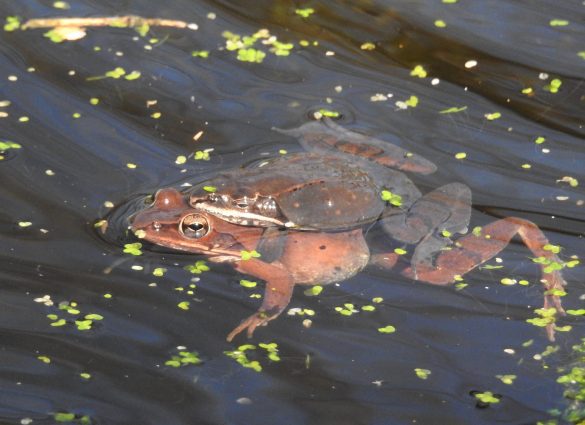
Frog time!
Those loud peeps, clacks, trills, snores, and other odd sounds are the mating calls of the Anurans, or the tailless amphibians commonly known as frogs which belong to the order Anura within the class Amphibia. One or more of Delmarva’s 18 frog species may be found in almost every freshwater wetland habitat in the State.
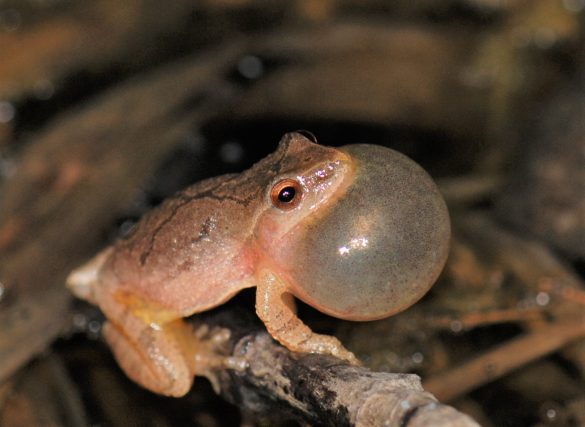
Most of these frogs call and mate during late winter and spring months. On a warm, rainy spring night it would be hard to find a place in Delaware, excluding cities, where calling frogs could not be heard by a patient listener.
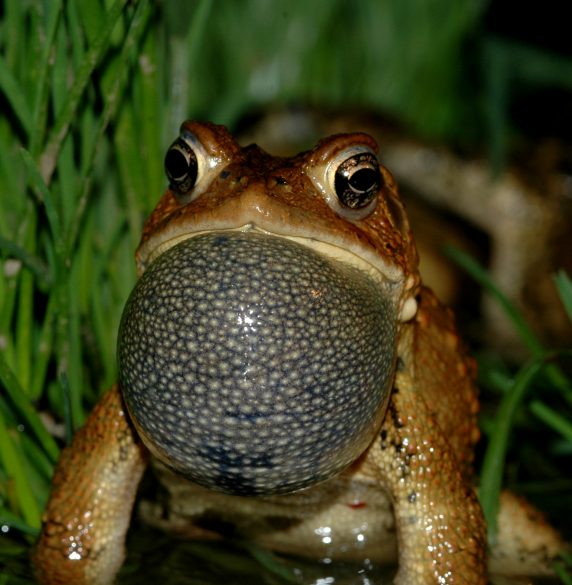
Frogs have adapted well to terrestrial life by solving most of the problems associated with life on land such as breathing atmospheric oxygen, locomotion, and obtaining food. Ties with the water have not been completely broken, however, as frogs in our area must return to aquatic habitats to reproduce. Mating, egg laying, and larvae (tadpole) development must occur in vernal pools, ponds, marches, swamps, slow-moving streams, or puddles.
Outnumbering females, the males of each species are the first to reach the breeding areas. A male then directs the female to his territory with a breeding or advertisement call. Each species has its own unique advertisement call that is easily recognized by the female. This call motivates and guides her to the waiting males.
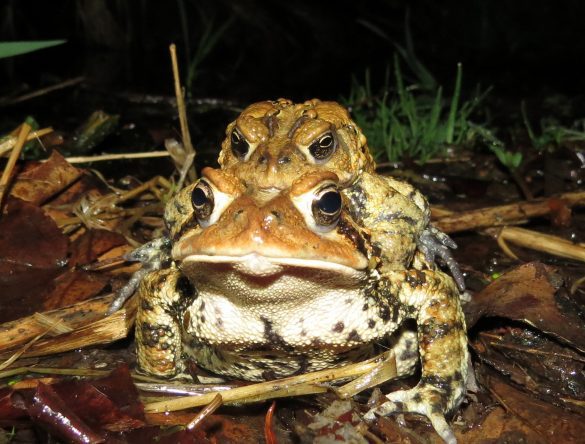
Mating
Although mating tactics vary with species, mating usually ensues soon after the females arrive at the breeding area. Each successful male of all of but one Delaware’s frogs, clasps a female from the back, holding tightly under her forearms and above her egg-packed belly. This act is called amplexus. If she is ready, the tight grip by the male will stimulate egg laying; and simultaneously the male will begin external fertilization. If the female is not ready, the pair may remain clasped together for hours.
Each female may lay hundreds of eggs, either singularly, in clusters, or in long strands according to her species. Depending on the water temperature and the type of frog, eggs hatch into tadpoles in five to forty days. The amount of time spent as a tadpole also varies between species from three weeks to two years. Once the tadpole metamorphoses to a frog, it may remain near the wetland or travel to a more terrestrial habitat.
Breeding
Breeding areas are usually shared by many individuals, sometimes of more than one species. The collective sound coming from these breeding sites is called a “chorus” and may be heard from several hundred yards. Just as birds may be identified by their songs, herpetologists are able to confirm the presence of a certain species by its breeding call.
While listening to breeding calls can be easy, visually observing the breeding behavior is another matter. Relatively few people have actually seen a frog that is calling or mating. There are several reasons for this. First, frogs tend to breed in wet, soggy areas that most people avoid. Secondly, calling usually occurs at night, making movement through these habitats and observation difficult. Thirdly, frogs have a habit of concealing themselves in vegetation and becoming silent when approached. Lastly, the exact location of a calling individual, even when very close by, is often hard to pinpoint due to their powers of ventriloquism.
Although frog watching (or “frogging”) may never rival birdwatching in popularity, it will give hours of pleasure and excitement to the dedicated participant. Not an expensive hobby, frogging does however require some basic equipment, including: rubber boots (sometimes even hip boots or waders); raingear; and a bright flashlight.
Frogging
March and April are great months to listen and look for several species. On the Piedmont region of Delaware you can listen for the high-pitched, loud peeping call of the Spring Peeper (Pseudacris crucifer), the quacking sounds of the Wood Frog (Lithobates sylvaticus), the long soft musical trill of the American Toad (Anaxyrus americanus), and the low snore of the Pickerel Frog (Lithobates palustris). Great places to look for these frogs are Ashland Nature Center, Brandywine Creek State Park, and White Clay Creek State Park.
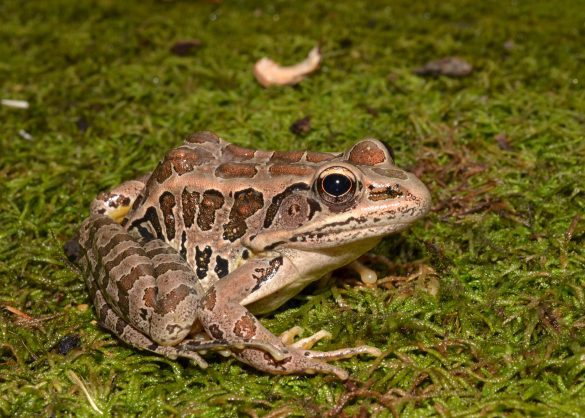
If you happen to be near the Delaware River or Bay you may hear the clacking of breeding Atlantic Coast Leopard Frogs (Lithobates kauffeldi) – the Jack A. Markell Trail at the DuPont Environmental Education Center is a good place to find them.
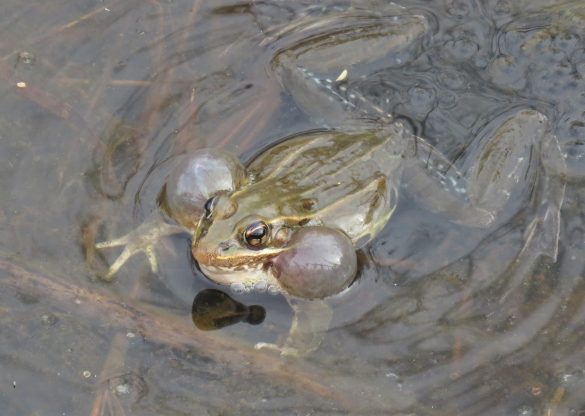
You can also hear many of these same frogs calling on the Coastal Plain of Delaware and you may even add a few different ones, such as the “ccrreeek” sound of the New Jersey Chorus Frog (Pseudacris kalmi) and the chuckling call of the Southern Leopard Frog (Lithobates sphenocephala). Abbott’s Mill Nature Center near Milford, Delaware can be a good place to witness these species.
There are several other frog species that breed a bit later in spring and early summer on Delmarva that I will wait to discuss in a future post. As I am writing this post as the daytime temperatures are rising, so do not hesitate. Get out there and do a little frogging!